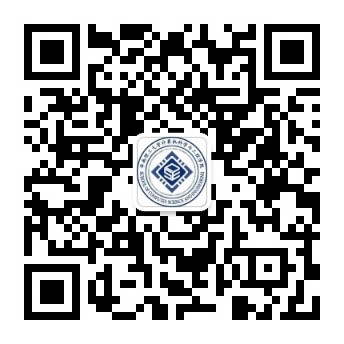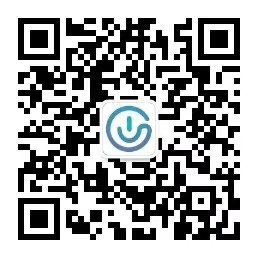高级语言程序设计(C++)(一)》实验教学大纲
课程代码 | 045100452 |
课程名称 | 高级语言程序设计(C++)(一) |
英文名称 | Advanced Language Programming (C++)(1) |
课程类别 | 学科基础课 |
课程性质 | 必修 |
学时 | 总学时:64学时 上机:16学时 |
学分 | 3.5 |
开课学期 | 1 |
开课单位 | 计算机科学与工程学院 |
适用专业 | 计算机科学与技术,信息安全,网络工程 |
授课语言 | 中文 |
先修课程 | 无 |
毕业要求(专业培养能力) | |
课程培养学生的能力(教学目标) | 完成课程后,学生将具备以下能力: 1. 掌握面向过程的程序设计语言的基本概念,培养学生的计算思维能力。
|
课程简介 | 《高级语言程序设计(C++)》课程分为(一)、(二)两部分。本课程的教学目的是通过C++,讲授过程化程序设计的概念和方法,使学生具有使用C++开发简单应用软件的能力,以及使用、理解新的软件工具环境的能力,在理论、实践上为后续软件课程打下坚实的基础。 教学内容包括:C++的基本数据与表达式;顺序控制结构,选择控制结构和循环控制结构;函数的定义、声明与调用;数组的定义及访问;位运算、集合的基本运算及实现、结构的定义和访问、链表的建立与操作。 |
主要仪器设备与软件 | 硬件设备:微机(每人1台) 软件:Windows系列操作系统,VC++2010 |
实验报告 | 无 |
考核方式 | OJ实验占课程总成绩的30%,以在OJ上通过的题目道数计算实验成绩 |
教材、实验指导书及教学参考书目 | (一)教材与参考书 1.周霭如、林伟健.《C++程序设计基础》(第5版),电子工业出版社,2016. 2.H.M.Deitel, P.J.Deitel. C++大学教程(第9版)(英文版),电子工业出版社,2016 3.谭浩强.C++程序设计(第四版),清华大学出版社,2010 (二)多媒体教学资源(课程网站、课件等资料) 1.广东省精品资源共享课程网站:http://202.38.193.234/c/ 2.爱课程:http://www.icourses.cn/coursestatic/course_5847.html |
制定人及发布时间 | 徐红云,沃焱,郑运平,李方,2017.6 |
《高级语言程序设计(C++)(一)》实验教学内容与学时分配
实验项目编号 | 实验项目名称 | 实验学时 | 实验内容提要 | 实验类型 | 实验要求 | 每组人数 | 主要仪器设备与软件 |
1 | 基于竞教相结合的实验一 | 4 | 分支语句、循环语句的使用 | 设计性 | 必做 | 1 | 硬件设备:微机(每人1台) 软件:Windows系列操作系统,VC++2010 |
2 | 基于竞教相结合的实验二 | 4 | 分支语句、循环语句、函数的使用 | 设计性 | 必做 | 1 | 硬件设备:微机(每人1台) 软件:Windows系列操作系统,VC++2010 |
3 | 基于竞教相结合的实验三 | 4 | 分支语句、循环语句、函数、数组的使用 | 设计性 | 必做 | 1 | 硬件设备:微机(每人1台) 软件:Windows系列操作系统,VC++2010 |
4 | 基于竞教相结合的实验四 | 4 | 分支语句、循环语句、函数、数组、结构的使用 | 设计性 | 必做 | 1 | 硬件设备:微机(每人1台) 软件:Windows系列操作系统,VC++2010 |
“Advanced Language Programming (C++)(1)”Syllabus
Course Code | 045100452 |
Course Title | Advanced Language Programming (C++)(1) |
Course Category | Disciplinary Basic Course |
Course Nature | Compulsory Course |
Class Hours | Total Hours: 64 TheoryClass Hours: 48 Lab Hours: 16 |
Credits | 3.5 |
Semester | 1 |
Institute | School ofComputer Science and Engineering |
Program Oriented | Computer Scienceand Technology, Information Security and Network Engineering |
Teaching Language | Chinese |
Prerequisites | NONE |
Student Outcomes (SpecialTraining Ability) | |
Teaching Objectives | Afterthis course, students will be required to:
|
Course Description | The<Advanced Language Programming> course contains two parts:(C++)(1) and (C++)(2). The purpose of this course is to letstudent understand the concept and method of procedure-orientedprogramming based on C++. Through this course, students will beable to develop small-scale software using C++, and gain thecapacity of understanding and using new programming tools, whichlays a good foundation for solving the theoretical or practicalproblems in follow-up courses. The contentsof this part include: date type and expression of C++; sequential,selective, and repetitive control structure; definition anddeclaration of function and function call; definition and usage ofarray; basic operation and implementation of bit operations andsets; definition and access of structure; construction andoperation of linked list and Bit-operation. |
Teaching Content and ClassHours Distribution |
Requirement:First, All students are required to recognize and remember thecharacter set, keywords, concepts of basic data type, naming rulesof identifiers, simple usage of standard stream cout and cin,operators and expressions. Second, all students are required tounderstand the concepts of type, variables and constants,different ways to access objects, expressions, evaluation rulesand type conversion. The last one, all students are required tohave the capability to write expressions according to the problem;simple programming.
Requirements:First, all students are required to recognize and remember thecontrol structures, such as if, switch, do…while and forstatements. Second, students are also required to understand theselection structures in programs, concept and components ofrepetition structure. Finally, students are required to have thecapability to use different control structures according to theproblems, switch if and switch, for, while and do while among theprocess to achieve Iterative Algorithms.
Requirements:First, all students are required to recognize and remember thathow to define and call function, classes and that how to defineand use the multiple file program structure and the grammar ofpreprocessors. Second, students are also required to understandthe concept of functions, how to pass parameters, function callstack, the storage classes of variables, scope, simple recursion ,inline function, function reload, default parameters of functionsand organization of classes. Finally, students are required tohave the capability to read and analyze programs, structuralprogramming.
Requirements:First, all students are required to recognize and remember thedefinition of arrays, how to access arrays and new and deleteoperator.Second,students are also required to understand the multidimensionalarrays, arrays as parameters, dynamic allocation, the concept ofstring, operations on string. Finally, all students are requiredhave the capability to organize arrays according to the problems,operate on arrays.
Requirements:First, all students are required to recognize and remember thebasic operations of bitwise, operators and set, the definition andaccess of structures. Second, students are also required tounderstand how to use structures as parameter and how to use thestructure array. Finally, all students are required have thecapability to use structure according to the problems.
|
Experimental teaching | Theexperiments are deployed on the Online Judge System and thewebsite is http://www.scut.edu.cn/on. There are about 5 problems needs to be solved every experimentand one of them are exploratory problem. All the problems aredeployed on OJ are original and is not regular for different gradestudents. The four experiments are shown as follow:
|
Teaching Method | Teaching inclass, experiments, homework and learning online. |
Examination Method | Thiscourse will take a written exam to assess the students’performance, which takes up 60% of the final grading. The auxiliaryassessment of this course includes: lab, homework and attendance,where the attendance takes up 10% of the final grading, and thelab and homework takes up 30% of the final grading. |
Teaching Materials andReference Books | (1)TeachingMaterials and Reference Books 1.周霭如、林伟健.《C++程序设计基础》(第5版),电子工业出版社,2016. 2.H.M.Deitel, P.J.Deitel. C++大学教程(第9版)(英文版),电子工业出版社,2016 3.谭浩强.C++程序设计(第四版),清华大学出版社,2010 (2)multimediateaching resource(Coursewebsite ,PPT and so on) 1.广东省精品资源共享课程网站:http://202.38.193.234/c/ 2.爱课程:http://www.icourses.cn/coursestatic/course_5847.html |
Prepared by Whomand When | Hongyun Xu, Yan Wo, YunpingZheng, Fang Li, 2017-6 |
“Advanced Language Programming (C++)(1)”ExperimentalTeachingSyllabus
Course Code | |
Course Title | Advanced Language Programming (C++)(1) |
Course Category | Disciplinary Basic Course |
Course Nature | Compulsory Course |
Class Hours | Total Hours: 64 TheoryClass Hours: 48 Lab Hours: 16 |
Credits | 3.5 |
Semester | 1 |
Institute | School ofComputer Science and Engineering |
Program Oriented | Computer,Information Security and Network Engineering majors. |
Teaching Language | Chinese |
Prerequisites | NONE |
Student Outcomes (SpecialTraining Ability) | |
Teaching Objectives | Afterthis course, students will be required to:
|
Course Description | The<Advanced Language Programming> course contains two parts:(C++)(1) and (C++)(2). The purpose of this course is to letstudent understand the concept and method of procedure-orientedprogramming based on C++. Through this course, students will beable to develop small-scale software using C++, and gain thecapacity of understanding and using new programming tools, whichlays a good foundation for solving the theoretical or practicalproblems in follow-up courses. The contentsof this part include: date type and expression of C++; sequential,selective, and repetitive control structure; definition anddeclaration of function and function call; definition and usage ofarray; basic operation and implementation of bit operations andsets; definition and access of structure; construction andoperation of linked list and Bit-operation. |
Instruments and Equipments | Hardware:microcomputer for per student Software:Windows Operating System, VC++2010 |
Experiment Report | NONE |
Assessment | Lab and homeworkon OJ takes up 30% of the final grading and the OJ grading isdecided by the number of problems the student solved. |
Teaching Materials andReference Books | (1)TeachingMaterials and Reference Books 1.周霭如、林伟健.《C++程序设计基础》(第5版),电子工业出版社,2016. 2.H.M.Deitel, P.J.Deitel. C++大学教程(第9版)(英文版),电子工业出版社,2016 3.谭浩强.C++程序设计(第四版),清华大学出版社,2010 (2)multimediateaching resource(Coursewebsite ,PPT and so on) 1.广东省精品资源共享课程网站:http://202.38.193.234/c/ 2.爱课程:http://www.icourses.cn/coursestatic/course_5847.html |
Prepared by Whomand When | Hongyun Xu, Yan Wo, YunpingZheng, Fang Li, 2017-6 |
“Advanced Language Programming (C++)(1)”ExperimentalTeaching Arrangements
No. | ExperimentItem | Class Hours | ContentSummary | Category | Requirements | Number ofStudentsEach Group | Instruments,Equipments and Software |
1 | OJ experiment one | 4 | Using of control structure.Such as if, switch, for, while and so on. | Design | Compulsory | 1 | Hardware:microcomputer for per student Software: Windows OperatingSystem, VC++2010 |
2 | OJ experiment two | 4 | Using of the controlstructure, function definition and function call. | Design | Compulsory | 1 | Hardware:microcomputer for per student Software: Windows OperatingSystem, VC++2010 |
3 | OJ experiment three | 4 | Using of the controlstructure, function, and array. | Design | Compulsory | 1 | Hardware:microcomputer for per student Software: Windows OperatingSystem, VC++2010 |
4 | OJ experiment four | 4 | Using of the controlstructure, function, array and data structure. | Design | Compulsory | 1 | Hardware:microcomputer for per student Software: Windows OperatingSystem, VC++2010 |



